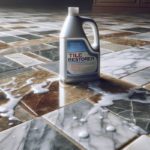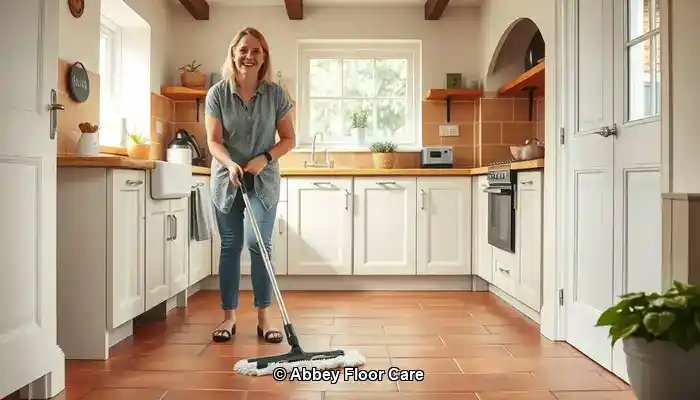
Last Updated on September 29, 2025 by David
Effective Strategies for Keeping Your Terracotta Floors Spotless
-
- Understanding the porosity of terracotta is vital, as it leads to swift dirt accumulation, particularly in humid climates like Surrey, where moisture can exacerbate the problem.
- Ensuring proper sealing is crucial to block moisture and dirt from penetrating the tiles, protecting your investment and maintaining aesthetics.
- Regular maintenance is essential—incorporating daily sweeping and weekly mopping using pH-neutral cleaning solutions is key to maintaining the pristine appearance of your tiles.
- Avoid using harsh chemicals and steam mops, as these can damage the protective seal and scratch the tile's surface, leading to premature deterioration.
- Opt for eco-friendly cleaning products, especially in households with children or pets, to promote a safe and healthy living environment.
- Consider investing in <b>professional restoration services</b> for comprehensive deep cleaning and resealing, which ensures long-lasting protection and enhances the overall appearance of your floors.
- Strategically place rugs and mats in high-traffic areas to significantly minimize dirt transfer onto the tiles, helping keep them cleaner for longer.
- Effectively manage moisture—ensure adequate ventilation and promptly deal with spills to prevent staining and mold growth, which can compromise the integrity of the tiles.
Why Do Terracotta Floors Become Dirty So Quickly?
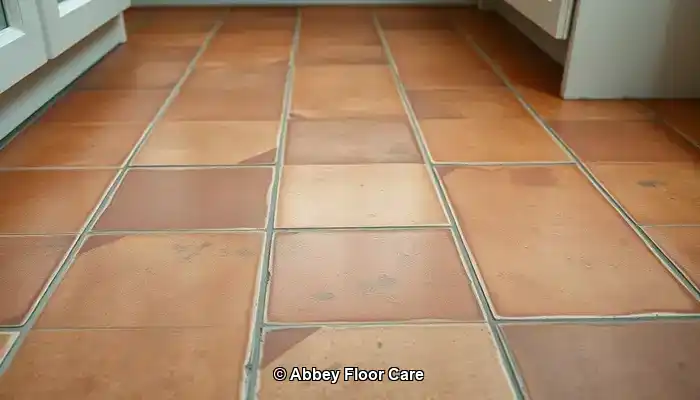
Terracotta tiles are a stunning flooring choice, particularly in homes styled traditionally or rustic across Surrey. The rich, warm tones and organic texture create an inviting atmosphere in any room. However, despite their aesthetic appeal, terracotta is infamous for quickly accumulating dirt, and understanding the underlying reasons is essential for developing effective cleaning and maintenance strategies. Knowing these factors allows homeowners to take proactive steps to maintain their floors.
Expert Insights: Top Products for Daily Terracotta Cleaning
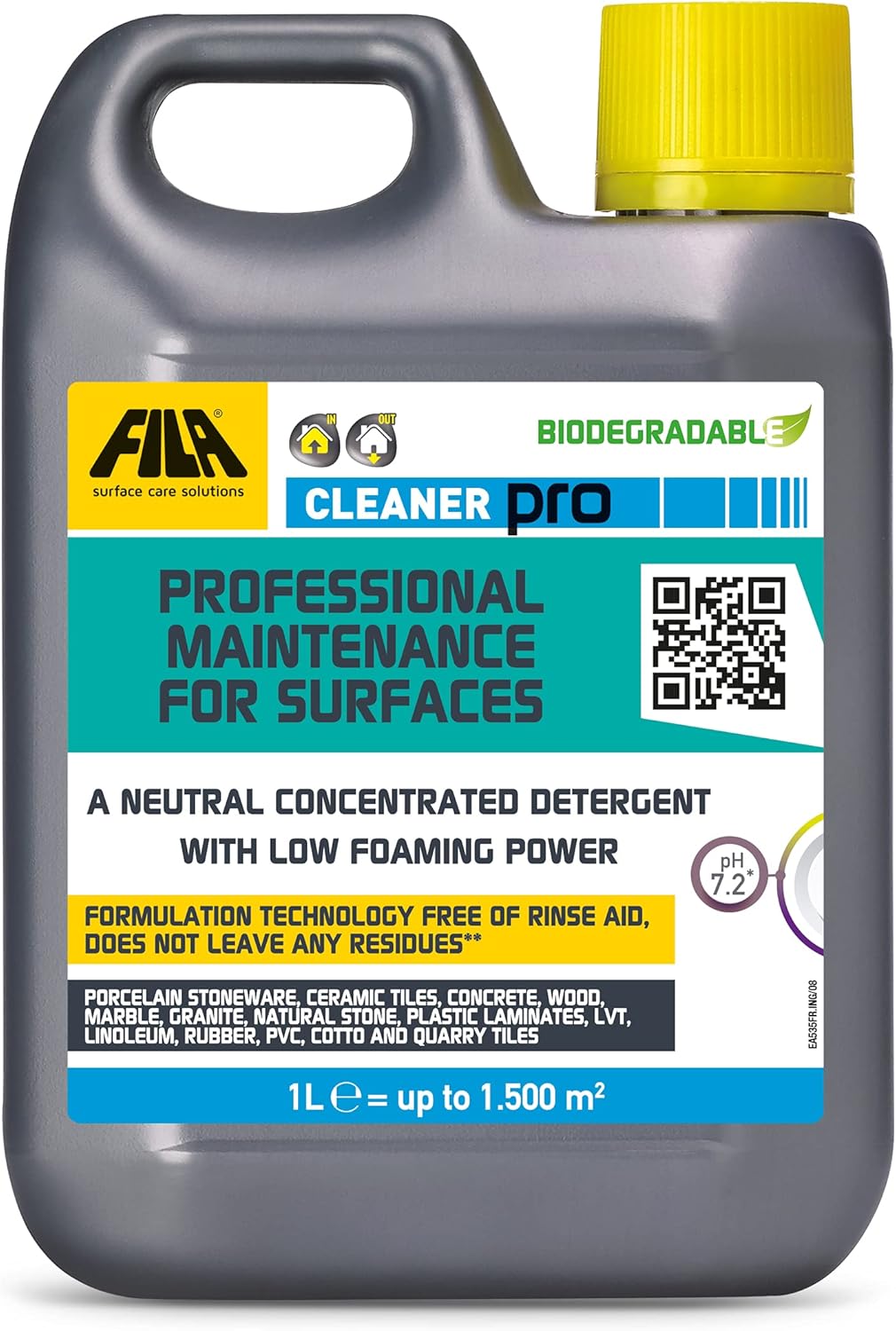
|
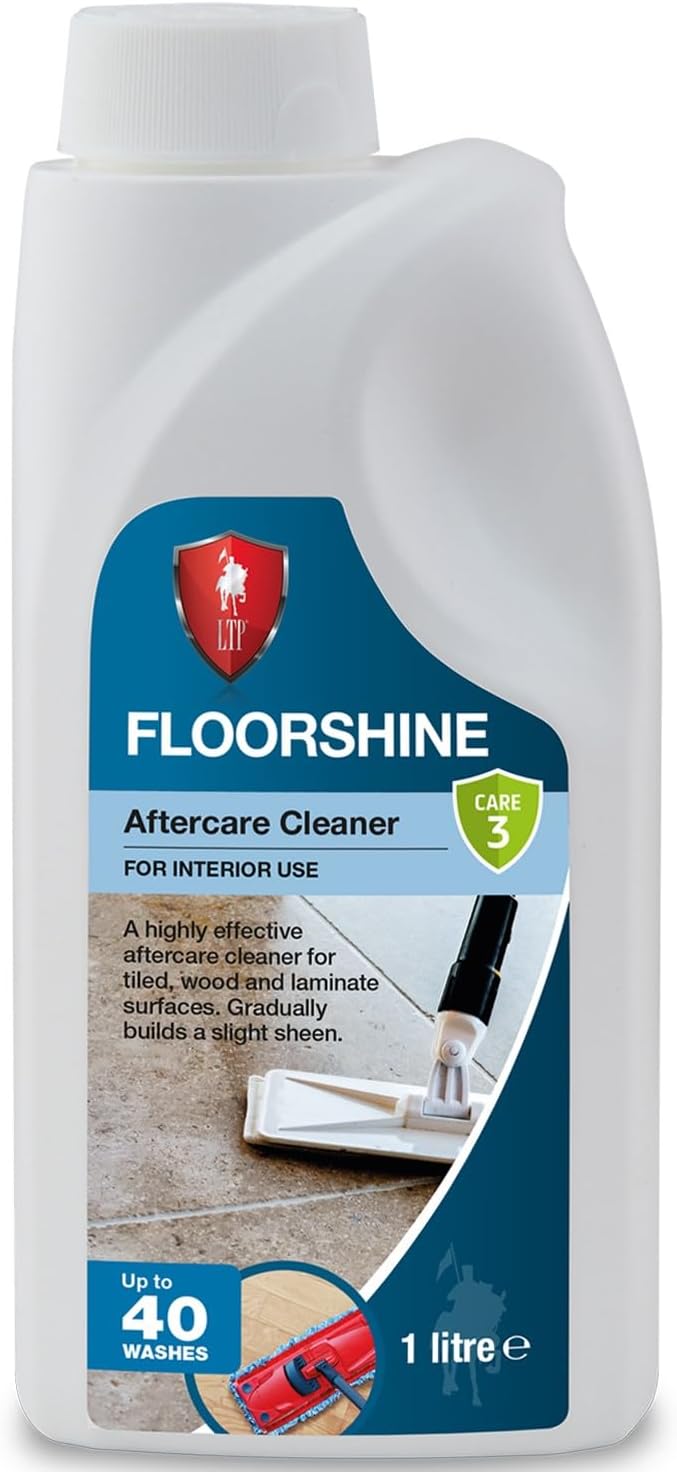
|
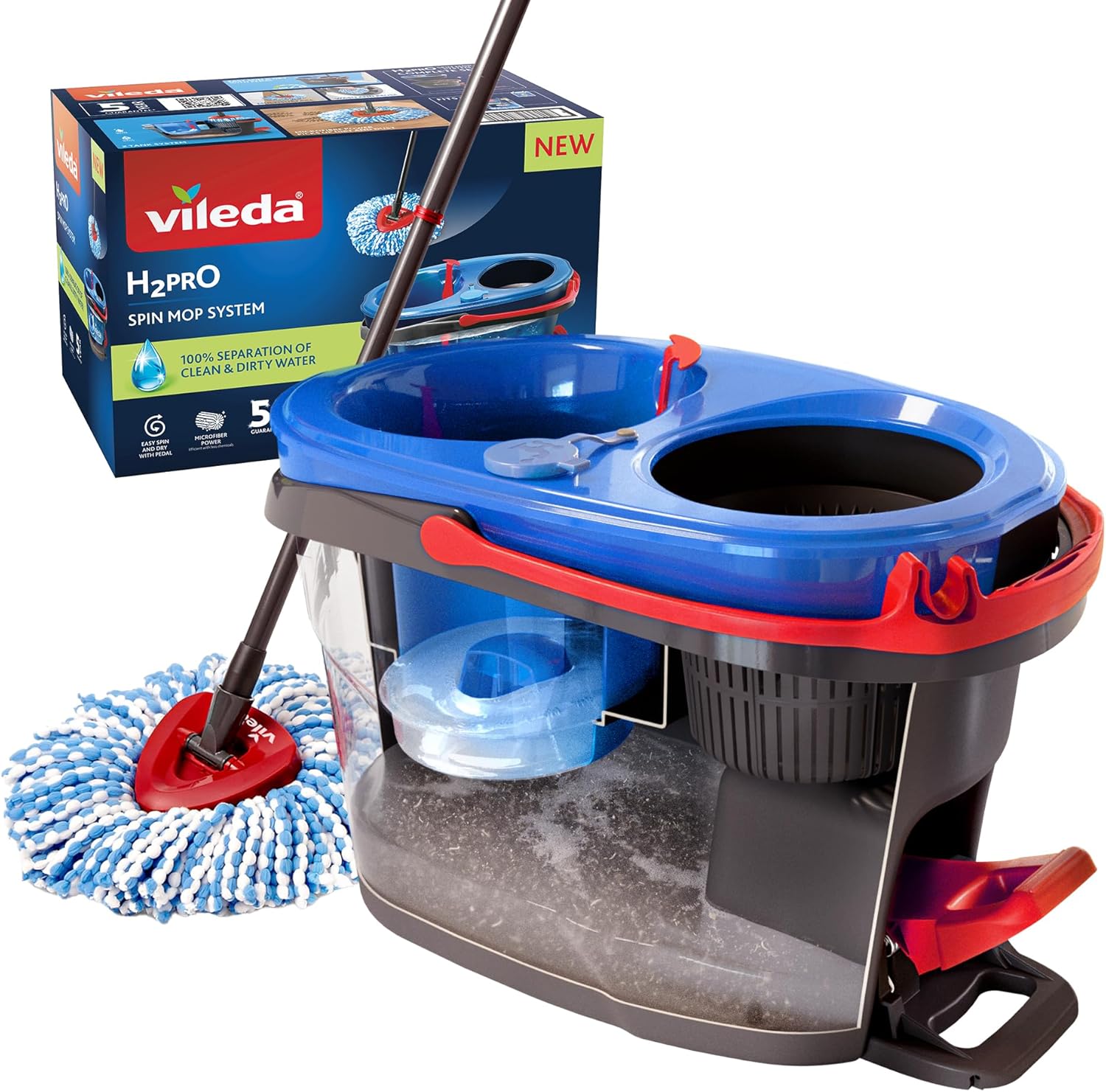
Vileda H2PrO Spin Mop System
|
Understanding Porosity: The Key Challenge in Terracotta Maintenance
Terracotta is crafted from natural clay, which is fired at lower temperatures, resulting in a highly porous surface. This unique characteristic allows the tile to absorb moisture, oils, and dirt exceptionally well, much like a sponge. In everyday usage, this porosity enables grime to infiltrate deeply into the tile, making removal with standard cleaning methods increasingly difficult.
Unsealed terracotta tiles are especially susceptible to damage. Without a protective seal, even minor spills or muddy footprints can leave lasting impressions. Over time, this can cause a dull and stained appearance, necessitating expert intervention for effective restoration and revitalization.
How Surrey's Climate Contributes to Rapid Dirt Accumulation on Terracotta Floors
The weather patterns in Surrey play a significant role in how quickly terracotta floors can become dirty. With regular rain and the high humidity characteristic of the region, more moisture is often tracked indoors, particularly in entryways and conservatories, leading to increased dirt and grime buildup.
Additionally, homes located near lush forests or gardens are at a heightened risk. Soil, pollen, and organic debris can easily transfer onto terracotta surfaces, especially if shoes are not removed upon entering the home. This environmental exposure necessitates diligent cleaning efforts to maintain floor hygiene.
Everyday Practices That Accelerate Dirt Buildup on Terracotta Tiles
Besides environmental conditions, daily habits can exacerbate the cleanliness of terracotta floors. Utilizing inappropriate cleaning products—such as acidic solutions or bleach—can strip away protective coatings and ultimately damage the tile's surface. While steam mops may appear to be a convenient option, they often push moisture deeper into the tile, worsening the existing issue.
High-traffic areas, including kitchens and hallways, naturally experience more wear and tear. If regular sweeping and mopping are neglected, dirt can rapidly build up and become embedded in the tile’s texture, leading to a more challenging cleaning process.
Proven Strategies for Maintaining Clean Terracotta Floors
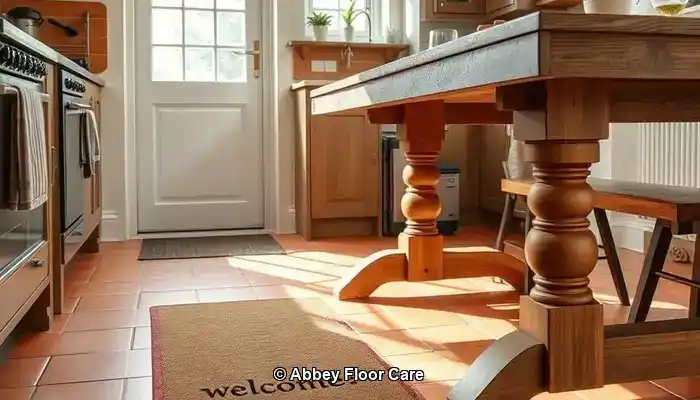
To keep terracotta floors clean, a proactive approach to dirt management is essential. In Surrey homes, where damp weather and garden traffic frequently occur, timely and consistent care is crucial for preserving the natural beauty of terracotta tiles. Implementing effective strategies can significantly enhance the longevity and appearance of your flooring.
Sealing: Your Primary Defense Against Dirt and Stains
The most effective method to prevent terracotta from accumulating dirt rapidly is to ensure it is appropriately sealed. A high-quality, breathable sealant creates a protective barrier that repels moisture, oils, and grime. Given Surrey's fluctuating humidity levels, sealing is particularly vital to prevent water absorption that may lead to staining and mold growth.
Experts recommend resealing terracotta every 12 to 18 months, depending on foot traffic and exposure conditions. In high-traffic areas, such as kitchens, hallways, and conservatories, more frequent sealing may be necessary. Always opt for a sealant specifically designed for porous stone, and avoid glossy finishes that can trap dirt on the surface.
Strategic Placement of Rugs and Mats to Reduce Dirt Traffic
Thoughtfully positioning rugs and mats can dramatically decrease the amount of dirt that reaches your terracotta tiles. Heavy-duty doormats at entrances are vital for capturing mud and moisture before they can be tracked into the home. In busy areas, such as hallways or under dining tables, area rugs can function as protective barriers against wear and tear.
For rooms connected to outdoor spaces, consider washable runners that can be cleaned regularly. These not only help maintain the flooring but also add warmth and style to your living space, enhancing the overall aesthetic while keeping dirt at bay.
Efficient Moisture Control Strategies for Surrey Homes
The climate in Surrey, characterized by frequent rainfall and humidity, can accelerate dirt accumulation on terracotta. To combat this, utilize dehumidifiers in enclosed spaces and ensure proper ventilation throughout your home. Be prompt in cleaning up spills and avoid leaving wet items—such as shoes or towels—on the floor to prevent moisture-related issues.
If your terracotta is located in a conservatory or garden room, consider installing blinds or UV filters to minimize condensation and prevent sun damage. These small adjustments can significantly impact the longevity and appearance of your tiles over time, ensuring they remain both functional and beautiful.
By combining effective sealing, thoughtful design choices, and moisture management, homeowners in Surrey can significantly slow the rate at which terracotta floors become dirty. The following section will outline the best cleaning practices to maintain that fresh, natural look day after day.
Optimal Cleaning Techniques for Terracotta Flooring
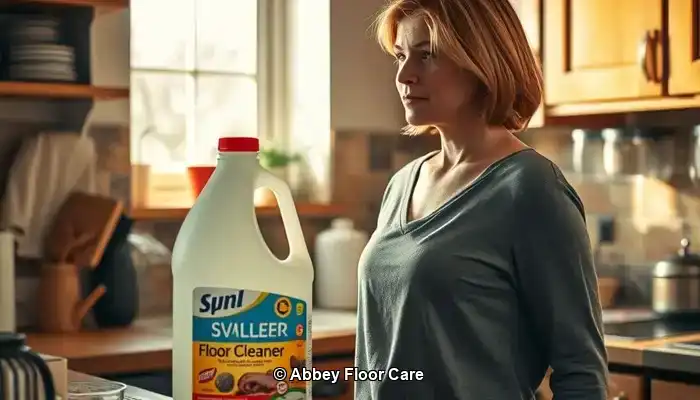
Even with proper sealing and preventative measures in place, terracotta floors require regular upkeep to maintain their natural beauty. The key lies in employing appropriate techniques and products that effectively clean without compromising the tile’s porous structure, ensuring a long-lasting and appealing finish.
Establishing a Daily and Weekly Cleaning Routine
In Surrey homes, where outdoor elements frequently make their way inside, daily sweeping or vacuuming is crucial. Use a soft-bristle broom or a vacuum cleaner with a hard floor setting to eliminate dust, grit, and organic debris before they settle into the tile, preventing future problems.
For weekly maintenance, mop with warm water and a pH-neutral cleaner specifically formulated for natural stone. Avoid soaking the floor, as damp mopping is the preferred technique. Excessive water can seep into the tile and lead to staining or mold growth, particularly in older or poorly sealed installations.
Selecting the Best Cleaning Products for Terracotta Care
Opt for cleaning products that are both gentle and effective. Look for labels that indicate “stone-safe,” “non-acidic,” or “pH-neutral.” In Surrey, where eco-friendly living is increasingly valued, many homeowners prefer biodegradable cleaning solutions that are safe for pets and children.
Avoid multi-surface cleaners that contain bleach, ammonia, or citrus extracts, as these substances can damage sealants and etch the terracotta, making it more susceptible to future staining.
For stubborn stains, apply a soft cloth and a diluted solution of stone cleaner. Never use abrasive pads or wire brushes, as these can scratch the surface and complicate future cleaning efforts, leading to more significant issues down the line.
What to Avoid: Harsh Chemicals and Steam Mops
While steam mops may seem like a convenient cleaning solution, they are unsuitable for terracotta. The high heat and moisture can penetrate the tile and weaken the seal, resulting in long-term damage. Similarly, acidic cleaners such as vinegar or lemon juice—even when diluted—can erode the tile's surface and result in discoloration.
Stick to gentle cleaning methods and always perform tests on a small, inconspicuous area before applying new products across your entire floor, ensuring no adverse reactions occur.
Weighing Professional Tile Care Against DIY Maintenance for Terracotta
For many homeowners in Surrey, the journey of maintaining terracotta floors often starts with DIY methods. While routine sweeping and mopping can be beneficial, there comes a time when professional care becomes not only advantageous but necessary for optimal results.
When to Consult a Surrey Tile Specialist
If your terracotta tiles exhibit signs of deep staining, uneven color, or surface wear, it is wise to seek expert assistance. Professional tile care specialists in Surrey utilize advanced equipment and stone-safe products that penetrate deeper than standard household cleaners. They can assess the condition of your sealant and recommend an appropriate resealing schedule based on your home’s specific circumstances.
Restoration services typically include deep cleaning, stain removal, and the application of breathable sealants that protect the tile without altering its natural appearance. For older homes or heritage properties, specialists can even recreate the original finish, ensuring authenticity is preserved.
Evaluating Cost vs. Longevity: The Value of Professional Care
While DIY cleaning may appear more economical initially, it often leads to short-lived results. Without effective sealing and deep cleaning, dirt continues to accumulate—necessitating more frequent maintenance and risking irreversible damage.
Conversely, professional care can extend the lifespan of your terracotta floors. A single restoration session can rejuvenate color, eliminate ingrained grime, and protect the surface for months or even years. In high-traffic areas like kitchens or hallways, this investment pays off through reduced maintenance and improved visual appeal.
Homeowners in Surrey who prioritize long-term property care and aesthetic charm typically find that expert services provide both reassurance and superior results. Moreover, many local providers offer eco-friendly options and tailored maintenance plans that align with your lifestyle, making it easier to care for your floors.
Exploring Eco-Friendly and Safe Cleaning Solutions for Terracotta
The earthy beauty of terracotta deserves care that honors its natural essence. For homeowners in Surrey who wish to maintain clean floors without compromising health or environmental sustainability, eco-friendly cleaning is the optimal choice. Thankfully, modern products and techniques make it possible to protect your tiles—and your household—without resorting to harsh chemicals.
Selecting Non-Toxic Sealants and Cleaning Products
Traditional sealants often contain solvents that release volatile organic compounds (VOCs), which can linger in the air and negatively impact indoor air quality. Nowadays, eco-friendly alternatives utilize water-based formulations that are low in VOCs and safe for homes with children and pets.
When choosing a cleaner, look for products labeled as “biodegradable,” “plant-based,” or “stone-safe.” These options are specifically designed to lift dirt without harming the porous surface of terracotta. Brands focusing on natural stone care often provide concentrated solutions that can be diluted for everyday use, effectively reducing waste and packaging.
Child- and Pet-Safe Alternatives for Cleaning
In active Surrey households, ensuring safety is as crucial as maintaining cleanliness. Avoid bleach, ammonia, and acidic cleaners like vinegar, which can not only damage the tile but also pose risks to pets and young children. Instead, opt for gentle formulations made from coconut oil, citrus enzymes, or mineral-based ingredients, which are safer for your family.
If you prefer DIY cleaning solutions, a simple mixture of warm water and a few drops of castile soap can be surprisingly effective for light cleaning tasks. Just remember to test any homemade mixture on a small, inconspicuous area first to ensure it won’t adversely affect the sealant or finish.
Promoting Sustainable Cleaning Practices
Practicing eco-friendly care extends beyond product selection—it encompasses habits as well. Use reusable microfiber cloths and mops instead of disposable options, which contribute to waste. Regular sweeping reduces the need for frequent wet cleaning, preserving the integrity of your tiles. Additionally, when resealing, choose products with recyclable packaging and minimal environmental impact.
Many floor care professionals in Surrey now offer green cleaning packages, utilizing certified non-toxic products and sustainable methods. If you’re unsure where to start, scheduling a consultation with a local expert can help you establish a routine that is both effective and environmentally responsible.
Keeping Your Terracotta Floors Looking Immaculate
Terracotta flooring adds warmth, character, and timeless appeal to Surrey homes; however, its porous nature necessitates careful maintenance to remain clean and vibrant. By understanding the causes of rapid dirt accumulation, implementing effective sealing practices, and adopting smart cleaning routines, you can significantly reduce grime buildup and extend the life of your tiles.
Whether managing a busy household or restoring a historic property, consistency is vital. Regular sweeping, pH-neutral cleaning, and seasonal resealing are critical components of maintaining an immaculate appearance. When stains or wear begin to appear, don’t hesitate to reach out to a local specialist for professional restoration services.
Utilizing eco-friendly products and safe cleaning methods ensures your floors remain beautiful without compromising health or environmental integrity. With the right approach, terracotta can continue to be a stunning feature in your home for many years to come.
Ready to protect your floors the smart way? <a href=”https://www.abbeyfloorcare.co.uk/home-garden/porcelain-tile-repair-near-me-east-calder/”>Contact us today</a> for expert terracotta maintenance tailored to the unique conditions of Surrey. Let’s keep your home looking its best—naturally.
Common Questions About Terracotta Maintenance Answered
Terracotta floors possess timeless appeal, but they come with specific care requirements. Below are answers to some of the most frequently asked questions from Surrey homeowners who want to keep their tiles clean, protected, and visually stunning.
How Often Should I Reseal My Terracotta Tiles?
In most Surrey homes, terracotta tiles should be resealed every 12 to 18 months. However, the frequency may vary based on foot traffic, moisture exposure, and whether the tiles are indoors or outdoors. Areas such as kitchens, hallways, and conservatories may require more frequent resealing. If your tiles begin to absorb water or appear dull, it’s time for resealing.
Can I Use Vinegar or Bleach on My Terracotta Floors?
No—vinegar, bleach, and other acidic or harsh cleaners can severely damage terracotta. These substances erode sealants and etch the tile surface, resulting in irreversible discoloration. Always opt for pH-neutral, stone-safe cleaning products designed specifically for porous flooring.
What Is the Best Mop for Cleaning Terracotta Floors?
A microfiber mop is the ideal choice for terracotta floors. It effectively captures dust and dirt without scratching the surface and requires minimal water, which is critical for porous tiles like terracotta. Avoid sponge mops or steam mops, which can oversaturate the tiles and compromise the sealant.
Is It Safe to Use DIY Cleaning Solutions?
Yes, but with caution. A mild mixture of warm water and castile soap can work well for light cleaning tasks. Always test any homemade solution on a small, hidden area first. Avoid anything acidic or abrasive, and never apply homemade cleaners to unsealed tiles.
What Should I Do If My Tiles Are Already Stained?
If stains have penetrated the tiles, professional restoration is the best course of action. Tile care specialists in Surrey can provide deep cleaning, remove embedded grime, and reseal the surface to restore the tile’s original color and texture. DIY methods may exacerbate the damage if inappropriate products are used.
The Article Tired of Dirty Terracotta? How to Keep It Clean Longer first found on https://www.abbeyfloorcare.co.uk
The Article Keep Terracotta Clean Longer: Tips for Sparkling Surfaces appeared first on https://fabritec.org
The Article Terracotta Cleaning Tips for Long-Lasting Sparkle Was Found On https://limitsofstrategy.com
